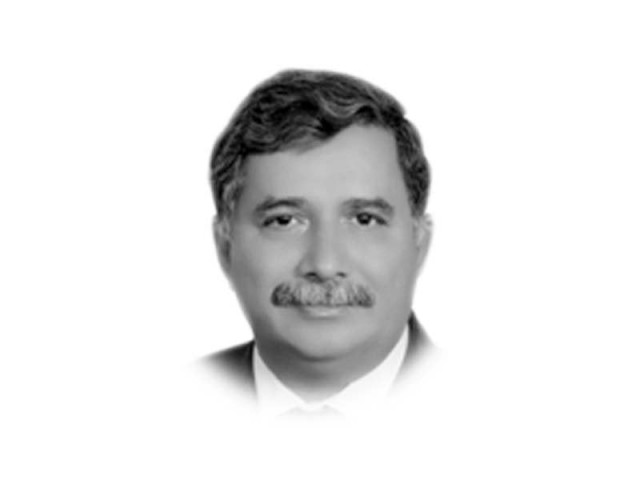Afghan peace process — twists and turns
Let it be a win-win solution for all.

The writer is a former secretary to Government Home and Tribal Affairs and a retired IG. He holds a PhD in Political Science and currently heads a think tank ‘Good Governance Forum’. He can be reached at aashah7@yahoo.com
The major criticism on the agreement was that whilst it agreed to the withdrawal of US forces from Afghanistan within 14 months, release of 5,000 Taliban prisoners and removal of UN sanctions against the Taliban leadership, it not only excluded the Afghan government but also other political and civil society groups. The parameters for the intra-Afghan dialogue were also left open without any clause for interpretation, thus creating hurdles to move forward.
The issue of the release of prisoners hit a snag when initially the Afghan government expressed its reluctance to release the prisoners without guarantees that they would not resume violence. However, it appears that backchannel contacts through the intermediaries have been established between the two adversaries, leading to the release of the first batch of prisoners on both sides.
In this twist and turn of events, before further discussion, it is necessary to have a fair idea of the capacity of the Taliban and the Afghan government to meet the ends of peace.
The Taliban as an organisation emerged in 1996 with an aim to establish a government based on orthodox Sharia and ruled Afghanistan till they were ousted in 2001. Having remained dormant for some time, they sprang into action to push the US and Nato forces out of Afghanistan and delegitimise the present Afghan government. They still mean to restore the Islamic Emirate of Afghanistan by adhering to a strict interpretation of the Sharia and considering jihad as a divine duty. In order to attain this goal, they use both conventional and unconventional methods.
The political power is exercised by mullahs from the Kandhari Pashtun tribes, known as the Quetta Shura. The organisational structure, Rehbar-e-Shura, is led by Mullah Haibatullah as Emir. It consists of 18 persons and is responsible for strategy, policy and overall decision-making. Although not the product of any election, by and large it can be described as a homogenous body. Mullah Haibatullah is the ultimate authority in matters of political, religious and military affairs.
Based on the study by the Stanford Center for International Security and Cooperation, it can be said that 14 districts in Afghanistan (4% of the country) are under the Taliban’s control and they have an active physical presence in an additional 263 districts (66% of the country).
Talking about the other side, Ashraf Ghani has been elected as president for a second consecutive term amid allegations of results manipulation leveled by his archrival Abdullah Abdullah. Ghani is striving hard to develop a consensus for negotiations among stakeholders opposed to the Taliban style of governance. In order to dispel the impression of a divided house, in a smart move Ghani not only announced a 21-member negotiating team but also asked Abdullah to head the team as vice president, besides nominating Hanif Ullah Atmar as acting foreign minister. Even though Abdullah has not yet accepted the offer and is demanding a 50% share in the cabinet and governors of his choice in the areas of his influence, he has endorsed the official team.
Similarly, Hamid Karzai, Abdul Rasool Sayyaf, Yunus Qanuni and Karim Khalili are engaged in resolving the differences between Ghani and Abdullah. Abdullah has pledged to cooperate with the political leaders to resolve the crisis while his spokesperson says that Abdullah and his supporters want a comprehensive and participatory system in the country. This rare consensus among the Afghan leaders has been appreciated by the European Union as well as by Zalmay Khalilzad who has highlighted it as a significant move bringing the parties closer for intra-Afghan negotiations.
The other idea floated in this context is to bring the process together by forming a Government of National Reconciliation (GNR), wherein Ghani will be responsible for governance and Abdullah for peace and reconciliation efforts. Those who floated this idea argued that GNR would be fundamentally different from the National Unity Government (NUG) which has run Afghanistan for the last five years.
Ahmad Massoud, another emerging leader, in his article published in The New York Times has stressed that for a lasting peace and just political order, certain significant structural changes need to be made to the highly centralised political and administrative system that concentrates power and financial resources in the office of the president with little accountability. He believes that a central unitary presidential system in a multi-ethnic society aggravates the internal conflict. As a solution, he has proposed decentralisation of power along the Swiss model.
Given the stance of Ghani and the Taliban, it appears that they want a centralised government whereas many others have voiced for a decentralised government. Efforts for a GNR appear to be underway amidst calls for structural changes in the Constitution. All sides to the table would initially take a hardline for the acceptance of their demand, but as talks progress, some common ground may be found.
For this to achieve, the Taliban, the Afghan government and other stakeholders have to demonstrate magnanimity by accommodating each other’s point of view.
In order to achieve the goal of peace, certain confidence-building measures are imperative. This requires an immediate cessation of hostility and broad contours for dialogue. Other suggested measures are: confirming one location for talks with the host playing the role of a facilitator, a designated mediator, agenda, rules of the game, perseverance, continuous formal and informal meetings and arrangement for technical assistance as well as an interpretation clause with the power to the meditator for interpretation. When all is said and done, ultimate peace requires a power-sharing formula taking into account the interests of all stakeholders by amending the Constitution of Afghanistan. Let it be a win-win solution for all.
Published in The Express Tribune, April 22nd, 2020.
Like Opinion & Editorial on Facebook, follow @ETOpEd on Twitter to receive all updates on all our daily pieces.


















COMMENTS
Comments are moderated and generally will be posted if they are on-topic and not abusive.
For more information, please see our Comments FAQ